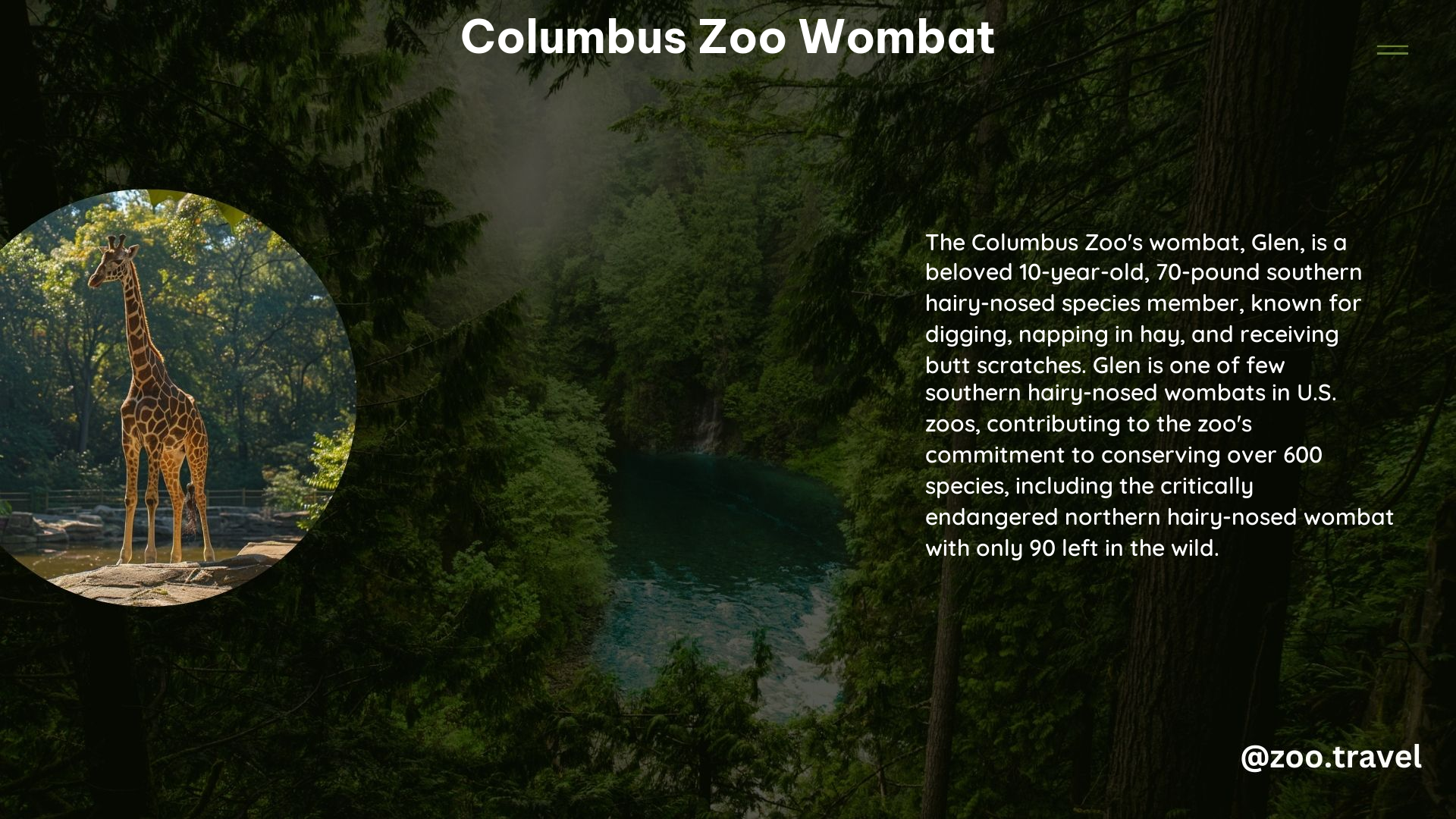The Columbus Zoo and Aquarium is home to a southern hairy-nosed wombat named Glen, who joined the zoo family in 2014 and has since become a favorite among guests. Southern hairy-nosed wombats are only found in a few zoos in the United States, making Glen a unique attraction.
About the Columbus Zoo Wombat
Glen, the southern hairy-nosed wombat at the Columbus Zoo and Aquarium, weighs approximately 70 pounds and is known for his sweet face and big personality. He enjoys various enrichment items, such as large Rubbermaid trashcans, cardboard boxes with hay, and empty hanging water jugs filled with hay. Glen is often found napping in large piles of hay, snacking on corn, and getting butt scratches from his keepers.
The southern hairy-nosed wombat is one of three wombat species, the others being the common wombat and the critically endangered northern hairy-nosed wombat, of which only an estimated 90 remain in the wild. Wombats have several unique adaptations, including pouches that open backward to prevent dirt from entering while digging burrows, bony plates covering their rear to protect them from predators, and flat-sided poop for marking territory.
Habitat and Behavior of the Columbus Zoo Wombat

Glen’s habitat at the Columbus Zoo and Aquarium provides ample opportunities for digging, reflecting their natural behavior of living in complex tunnel systems called warrens in their native semi-arid lands. Despite their reputation for being ornery and aggressive, Glen is described as “very laid back and extremely curious”.
Digging Behavior
Wombats are known for their impressive digging abilities, which they use to create complex tunnel systems called warrens. These warrens can extend up to 30 meters (98 feet) in length and can have multiple entrances and chambers. Wombats use their strong claws and powerful front legs to dig through the soil, creating a network of tunnels that provide shelter, food storage, and protection from predators.
Feeding Habits
Wombats are herbivores and primarily feed on grasses, roots, and other vegetation. They have a specialized digestive system that allows them to extract nutrients from tough, fibrous plant material. In the wild, wombats will spend several hours each day foraging for food, often grazing on the same patch of vegetation for extended periods.
Social Behavior
Wombats are generally solitary animals, but they may share their warrens with other wombats, particularly during the breeding season. They are known to be territorial and will mark their burrows with their distinctive flat-sided feces to establish their boundaries. Wombats communicate with each other through a variety of vocalizations, including grunts, snorts, and barks.
Visiting the Columbus Zoo Wombat
To visit Glen, guests can stop by the Nocturnal Building and Aviary, located in the Zoo’s Australia and the Islands region. The Columbus Zoo and Aquarium offers various tours and experiences, allowing guests to learn more about animals and conservation efforts.
Tours and Experiences
The Columbus Zoo and Aquarium offers a variety of tours and experiences that allow visitors to get up close and personal with the animals, including the southern hairy-nosed wombat. Some of the available options include:
- Behind-the-Scenes Tours: Guests can go behind the scenes and see how the zoo’s animal care team cares for the animals, including the wombat.
- Keeper Talks: Visitors can attend scheduled talks by the zoo’s animal keepers, who share information about the animals and their care.
- Animal Encounters: Guests can participate in interactive experiences, such as feeding or touching certain animals, under the guidance of trained staff.
Conservation Efforts
The Columbus Zoo and Aquarium is actively involved in conservation efforts for wombats and other endangered species. The zoo supports research and field work to protect the critically endangered northern hairy-nosed wombat, and it also participates in breeding programs to help maintain healthy populations of wombats in captivity.
By visiting the Columbus Zoo and Aquarium, guests can not only see the unique southern hairy-nosed wombat, but also learn about the importance of conservation and the efforts being made to protect these fascinating animals.
Conclusion
The Columbus Zoo Wombat, Glen, is a unique and fascinating attraction at the Columbus Zoo and Aquarium. As one of the few southern hairy-nosed wombats in captivity in the United States, Glen offers visitors a rare opportunity to learn about and observe these remarkable animals. With his sweet personality, impressive digging abilities, and the zoo’s commitment to conservation, Glen is sure to delight and educate visitors of all ages.
